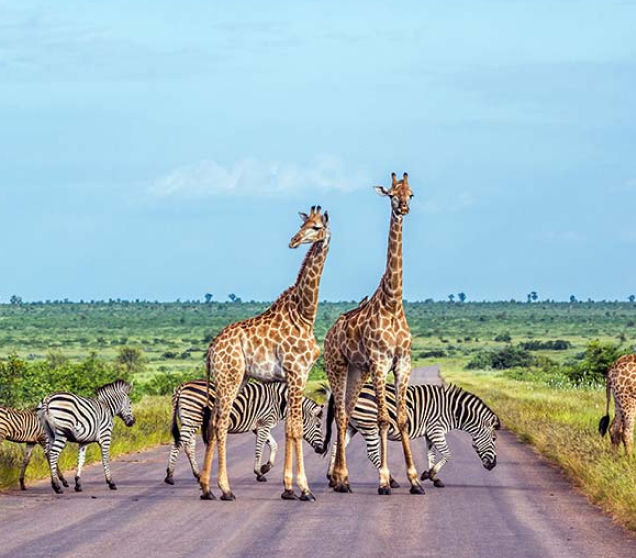

Mysterious and ancient, Egypt offers an adventure like no other. With a history that stretches back thousands of years, Egypt is a country of charming contrasts. Resting between the Mediterranean and Red Seas in northwest Africa, the mix of sun, sea and desert is irresistible.
With friendly locals, a unique cuisine and some of the world’s most spectacular monuments, Egypt is the adventure of a lifetime. Add to that the fantastic weather; it is time to give in to your dreams and step into the spectacle and glamour that is Egypt.
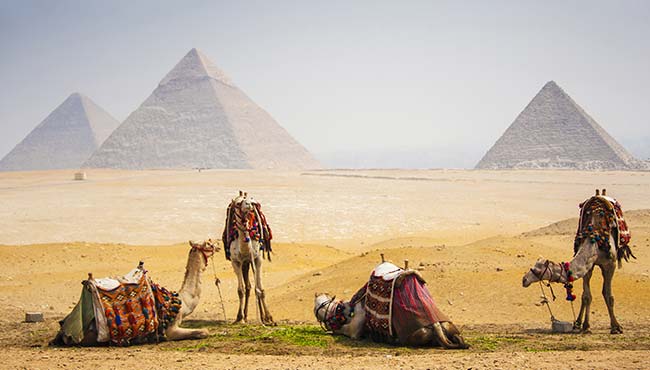
We love these G Adventures’ National Geographic tours, which offer unique and culturally immersive experiences.
Looking for a range of offers to compare? You can’t beat these Egypt deals from Tour Radar.
Not sure what you want to see yet? Then read on and discover our guide to this fantastic and wonder-filled country.
Egypt has long been a source of wonder and has enchanted generations of travellers. Home to the Pyramids of Giza, the last of the seven Wonders of the Ancient World, Egypt can never disappoint. Whether your passion is ancient temples, modern cities, vast deserts or glittering lakes, Egypt has it all. So, where to begin?
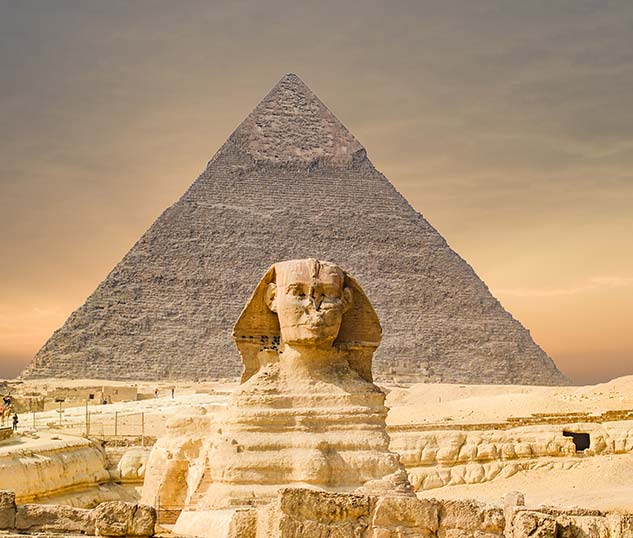
The Great Sphinx of Egypt rests majestically in front of the Pyramids of Giza. The limestone statue features a lion’s body and a human’s head. Archaeologists have long puzzled over the model and identity of the original face carving. Scholars believe that the Sphinx was carved during the reign of Pharaoh Khafre.
It was initially known as Hor-em-akhet, meaning Horus on the horizon. Horus was the Egyptian god of the sky. Named by the ancient Greeks, they thought it resembled a mythical winged monster of the same name.
The Sphinx lost its nose in antiquity, possibly through a combination of natural erosion and deliberate damage.
The Great Sphinx was said to have asked travellers a riddle. If they answered correctly, she let them pass. If they got it wrong, however, she ate them!
At over 6,600 km, the Nile is the longest in Africa, rising south of the Equator and draining into the Mediterranean Sea. The River flows northward from Lake Victoria. This vast Lake has shores in Uganda, Kenya and Tanzania and is fed by rivers from Tanzania, Burundi and Rwanda. Starting its journey as the Victoria Nile, the river becomes the Albert Nile as it leaves Lake Albert in Uganda. Continuing its journey on through Sudan, becoming first the White and then the Blue Nile before it enters Egypt at Lake Nasser.
The river’s annual floods would bring rich, fertile soil to the farmland along the riverbank. The cycle of drought and flood, of death and rebirth, mirrors the rituals of ancient Egypt and shaped its religion. The construction of Lake Nassar and the Aswan Dam, however, have stopped these annual inundations.
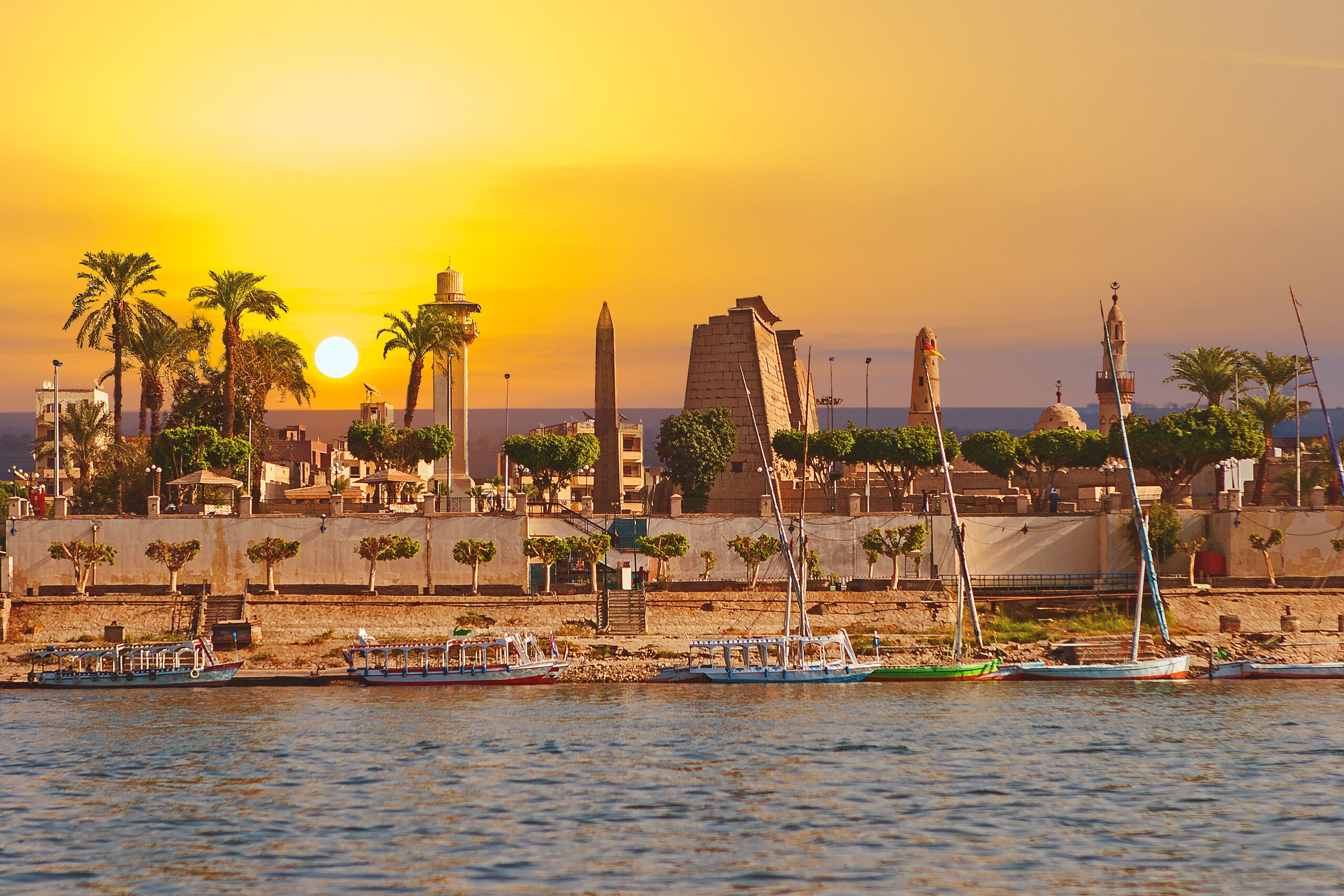
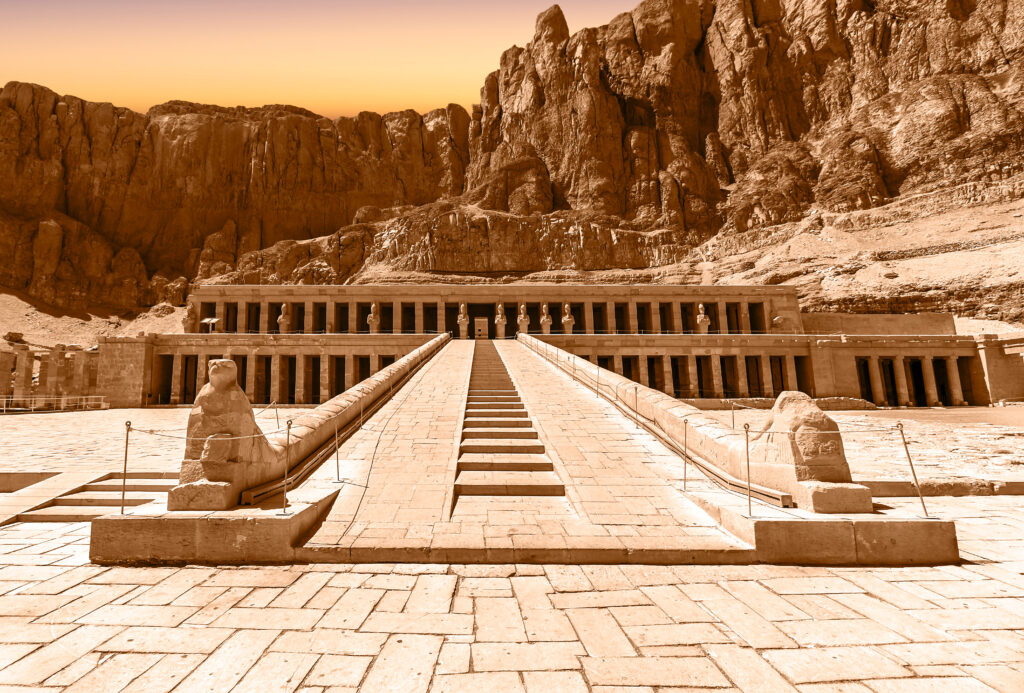
A short journey out of Luxor on the West Bank of the River Nile is the Valley of the Kings. No matter what you have read, nothing can prepare you for the scale and grandeur of this UNESCO World Heritage Site.
For nearly 500 years, it has been the burial site for the pharaohs and powerful nobles of the New Kingdom. Archaeologists have so far identified sixty-three tombs. Ransacked in antiquity, almost all of the tombs found to date, however, have lost their treasures, including their mummies. One of the most famous tombs is that of Tutankhamun. Discovered by the archaeologist Howard Carter in 1992, the tomb was relatively intact. The Cairo Museum has a permanent exhibition housing Tutankhamun’s treasures, including his tomb and golden death mask.
I first ‘visited’ Egypt through Agatha Christie’s iconic novel, Death on the Nile. This fantastic 10-day tour, by AB Voyages Egypt, immerses you in the heart of Egypt.
If you are anything like us, you need a stack of books to take on holiday. Whether it’s essential research or the perfect beach read, you can never have too many books. We love the stacked sale at Dymocks. And as any bookworm will tell you, a sale means more books!
Hieroglyphs and imagery that glorify gods and pharaohs alike cover the walls.. With unexpectedly vibrant colours and intricate carvings, the insides of the tombs are as breathtaking as the valley without.
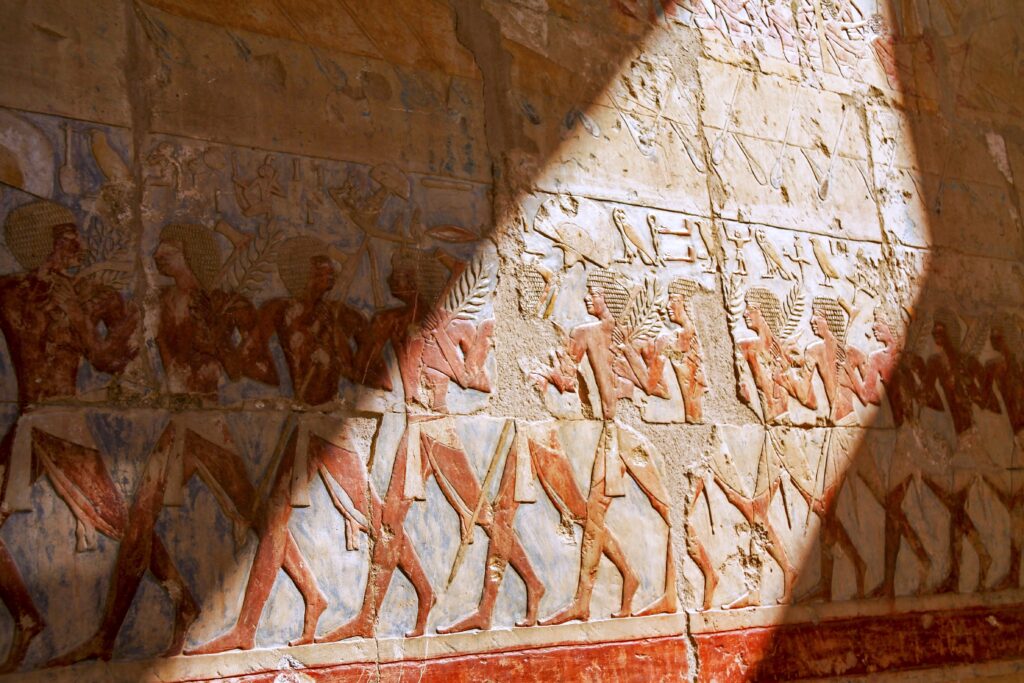
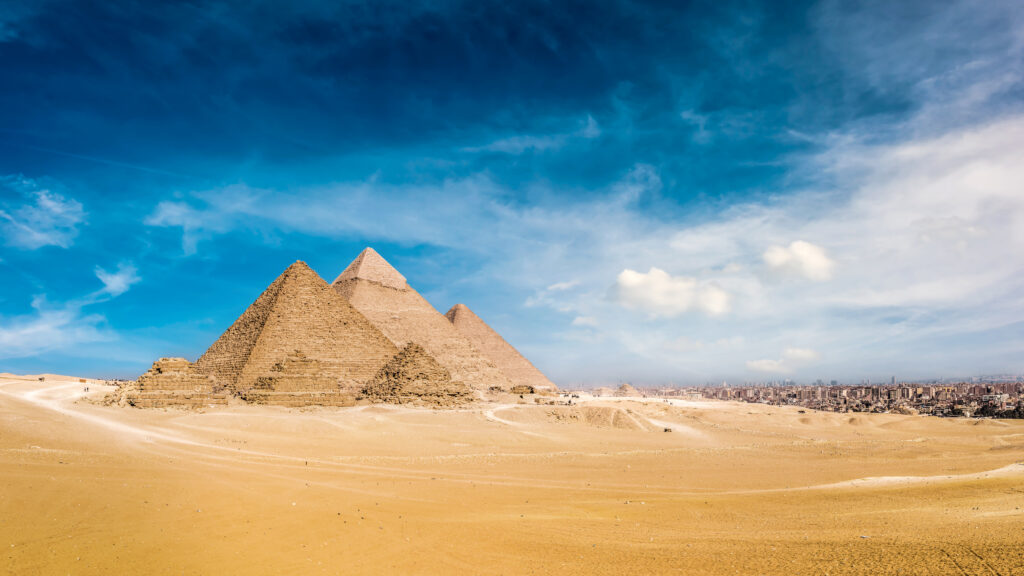
The Pyramids, built as tombs for the Pharaohs, have come to symbolise all that is wonderful and mysterious about this wonderful country. Saqqara, south of Giza, is home to the earliest known Egyptian pyramids. Among these is the stepped Pyramid of Djoser, built over 4000 years ago.
At Giza, on the outskirts of Cairo, are the Great Pyramid of Khufu, and those of Khafre and Menkaure. Historians believe that Egyptian architects used the stars to align the pyramid to true North. Khufu’s tomb is one of the Seven Wonders of the Ancient World. Egypt’s pharaohs sought immortality. While we continue to know their names and visit their impressive tombs, the Pharaohs of Egypt have become truly immortal.
Known to the ancient Egyptians as Thebes, the modern city of Luxor was the heart of ancient Egypt. Luxor Temple, on the banks of the River Nile, is at the centre of modern Luxor and is the largest Egyptian temple complex.
Amenhotep III began construction of the site, with later additions made by Tutankhamun and Ramses II. Karnak was once the religious heart of ancient Thebes and was linked to the town of Luxor by an avenue of sphinxes. A canal once connected the temple to the Nile.
Here you can marvel at the intricately carved columns that tower over the Hypostyle hall. Outside of Luxor are the Colossi of Memnon, which have stood for more than 3,000 years in the hot desert sun. The Colossi one stood guard at the entrance to the mortuary temple of Amenhotep III. One of our favourite destinations!
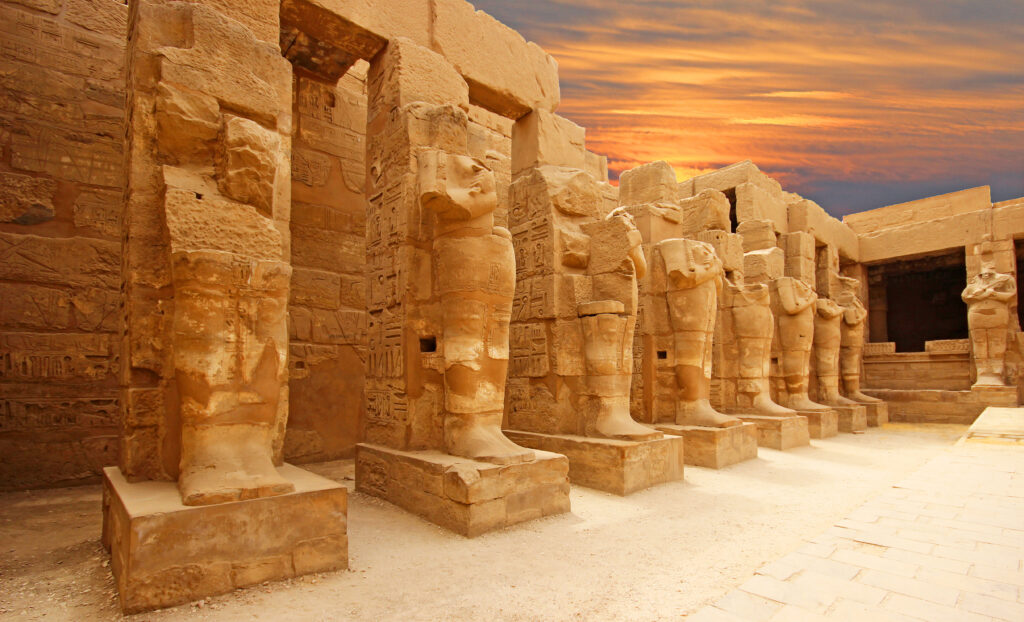
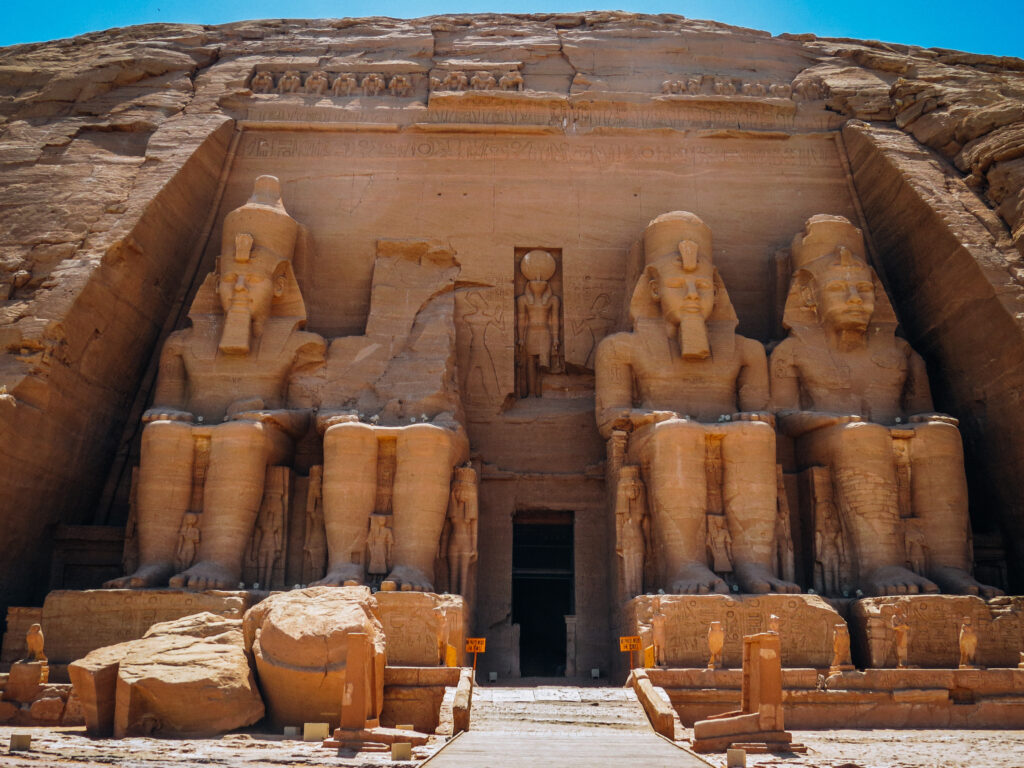
Built by Ramses II, one of Egypt’s greatest Pharaohs, the temple complex at Abu Simbel is a UNESCO World Heritage site. Resting above the banks of Lake Nassar, the vast complex was built in the 13th Century BCE and includes two magnificent temples. On the left of the complex is ‘The Grand Temple’ which is guarded by four massive statues of the Pharaoh. Alongside this is the smaller, yet equally enthralling temple built in honour of his favourite wife, Queen Nefertari. Nefertari’s temple is guarded by smaller but equally impressive statues of the Pharaoh and his Queen. Over time the complex fell into disuse and ruin, eventually becoming submerged by the desert sands. It was rediscovered by Italian explorer Giovanni Belzoni in 1817. The entire complex was dismantled and rebuilt by the Egyptian government as part of the preparation for the construction of the Aswan High Dam.
Founded in the 9th Century CE Egypt’s capital, Cairo is a city of contrasts, where ancient and modern collide. Our small group tours offer the opportunity to visit several historic and culturally significant sites, including the Muhammad Ali Mosque. The mosque is stunning inside and out, and its terrace offers one of the best views of the city. On a clear day, you can catch a glimpse of the Pyramids at Giza.
Travel through time as you explore the crowded streets of the Khan El-Khalili bazaar, where you can haggle for a bargain or enjoy a delicious cup of sweet sahlab (vanilla and milk). No visit to Cairo would be complete without a visit to the Egyptian Museum, which is famous for being the permanent site of Tutankhamun’s tomb and grave goods. The Museum is also home to amazing exhibits from royal mummies to towering statues, where you can come face to face with the Pharaohs of Egypt.
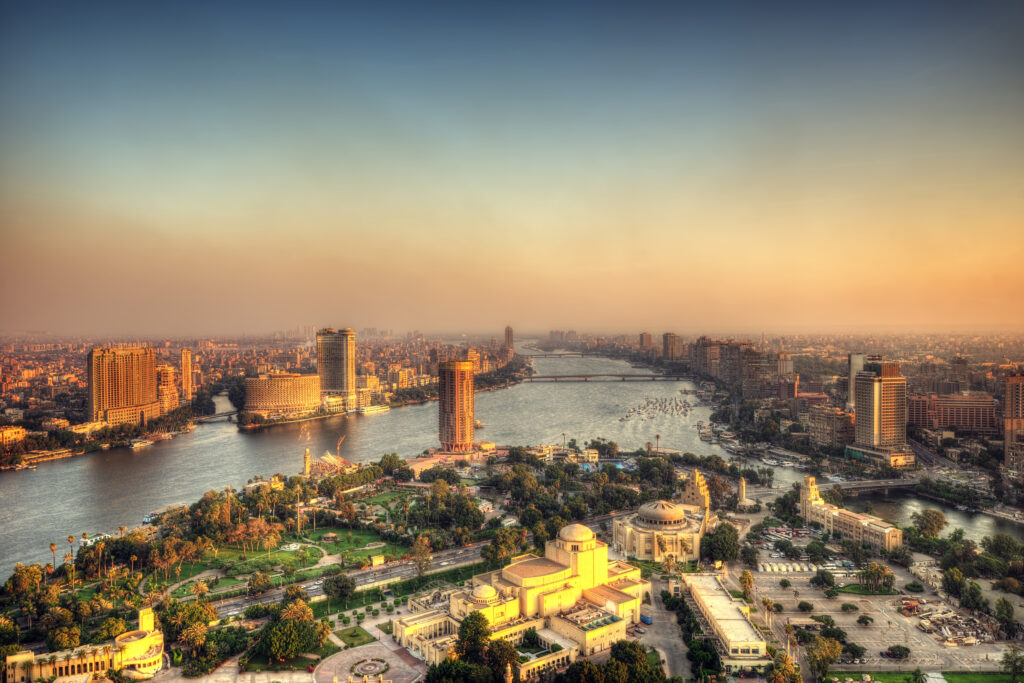
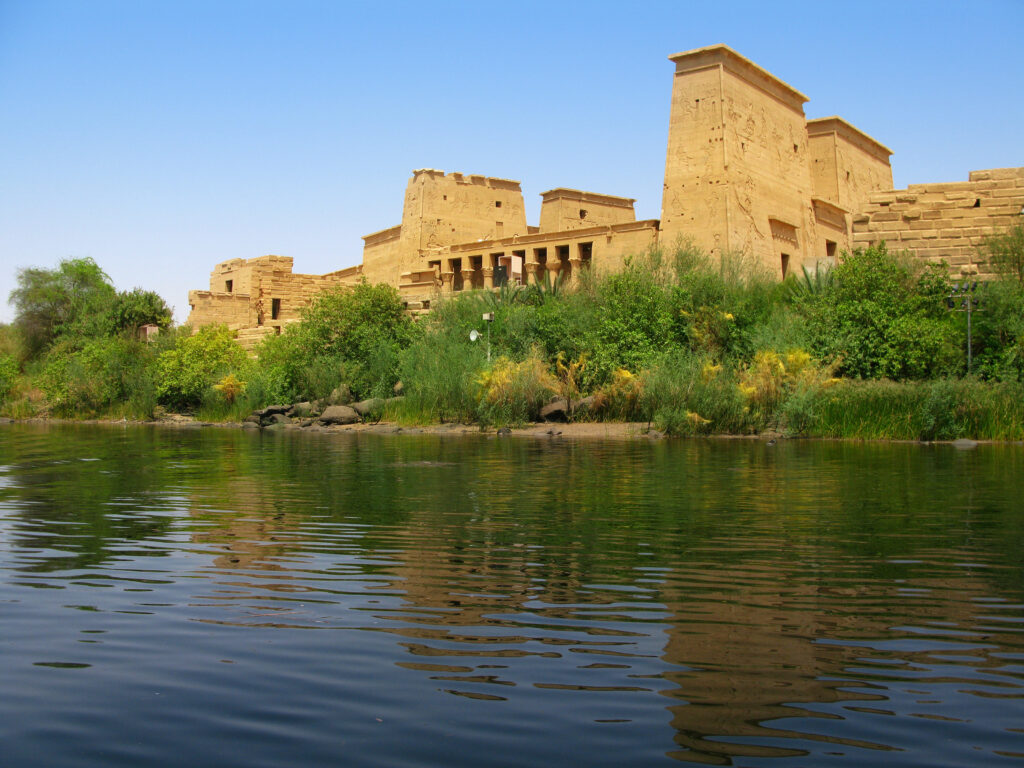
The city of Aswan, on the banks of the River Nile, was once home to the granite quarries that supplied stone for the Obelisks of ancient Egypt. One such obelisk remains firmly attached to the bedrock. The Unfinished Obelisk is more than 3000 years old and offers a fascinating insight into how the Ancient Egyptians quarried these enormous monuments. The Obelisk is carved from one piece of granite.
Aswan is also the site of the High Dam. One of the largest dams in the world, it was built to conserve water and protect farmland from the annual inundation caused by the Nile floods. Built at over 100 meters above sea level, the Dam is 3,600 meters long and 40 meters wide at the top.
Just a short boat ride away, Philae Temple sits on Agilika Island. The entire temple complex was dismantled and rebuilt block by block when its original location was to be flooded during the construction of the High Dam and reservoir.
Less well known, but as beautiful as any site, is the temple at Edfu. Dedicated to Horus and built between 237 and 50 BCE, it remains one of the best-preserved ancient temples in Egypt. The temple lay undisturbed and almost completely buried under over 30 feet of sand and silt from the Nile for centuries. A French expedition in 1798 sighted the upper levels of the pylons, but the complex remained hidden until 1860, when French archaeologist Auguste Mariette excavated it.
You enter the complex through a 30-metre-high gateway; the walls soaring above you are decorated with colossal reliefs of Ptolemy XI. The Pharaoh, seen in the classic propaganda pose of the time, wields a staff to smite his enemies. Two granite statues of Horus, patron of the Pharaohs, fittingly guard the entrance. As you walk the temple complex, look out for images of Horus.
These relaxing, culture-based tours encompass time at Edfu.
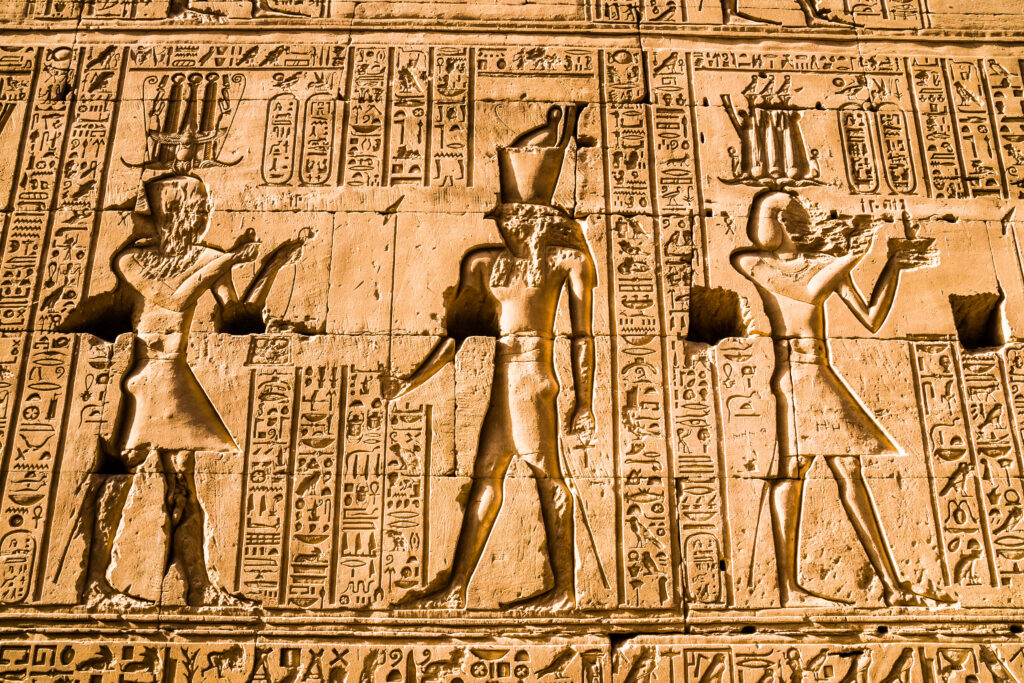
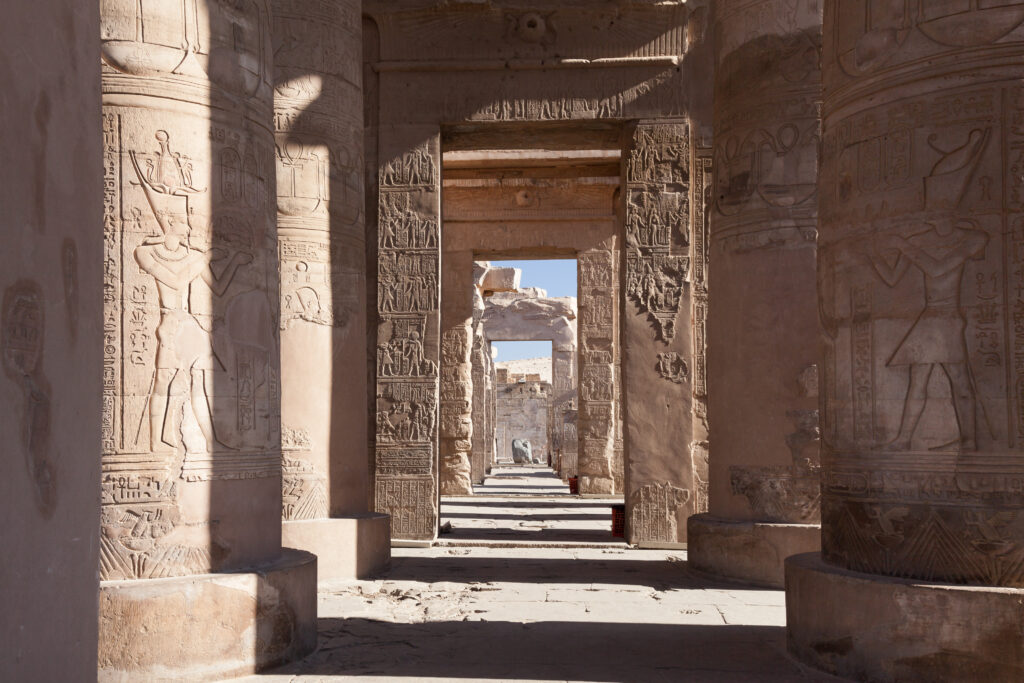
Between Edfu and Aswan, the temple at Kom Ombo rests on the banks of the River Nile and is home to a unique collection of mummies.
Dedicated to the worship of the Egyptian gods Horus the Elder and Sobek, the temple was built in the 2nd Century BCE by Thutmose III. Sobek took the form of a man with a crocodile’s head. Within the temple complex is the modern Crocodile Museum, where you can come face-to-face with the mummified remains of some of the sacred crocodiles that once roamed the temples. Up to five meters in length, these majestic animals are still incredible to see.
We love these small group tours that focus on time in Kom Ombo.
Carvings on the walls at Kom Ombo are thought to be the oldest images of medical instruments used for surgery. The carvings on the temple walls date from the early days of Roman occupation of Egypt. They include carvings depicting birthing chairs used at the time.
A holiday to Egypt doesn’t need to cost a fortune. Group tours provide an excellent way to explore everything Egypt has to offer, even if you’re on a budget. Our tours are designed to strike the perfect balance between value for money, authenticity, and unforgettable experiences, providing an in-depth look into Egyptian culture.
As an adventure tour specialist, we strive to maintain strong relationships with local suppliers and guides, prioritising the ethical and sustainable support of local businesses. Where possible, we only use operators committed to supporting family-run hotels and guesthouses, and we avoid large chains.
Prefer to tailor your tour? No problem – email us and we can suggest the perfect itinerary.
Chasing Thrills on a Budget: The call of adventure whispers in your ear, but your wallet whispers back a different…
The 7 human-made Wonders of our World The ancients created the original list of the Seven Wonders of the World.…
World heritage Convention UNESCO World Heritage Sites are protected cultural and natural sites that are significant to human heritage or…
We are passionate adventure travelers who want to share the world and our travel experiences with everyone…
This website uses cookies so that we can provide you with the best user experience possible. Cookie information is stored in your browser and performs functions such as recognising you when you return to our website and helping our team to understand which sections of the website you find most interesting and useful.
Strictly Necessary Cookie should be enabled at all times so that we can save your preferences for cookie settings.
If you disable this cookie, we will not be able to save your preferences. This means that every time you visit this website you will need to enable or disable cookies again.
